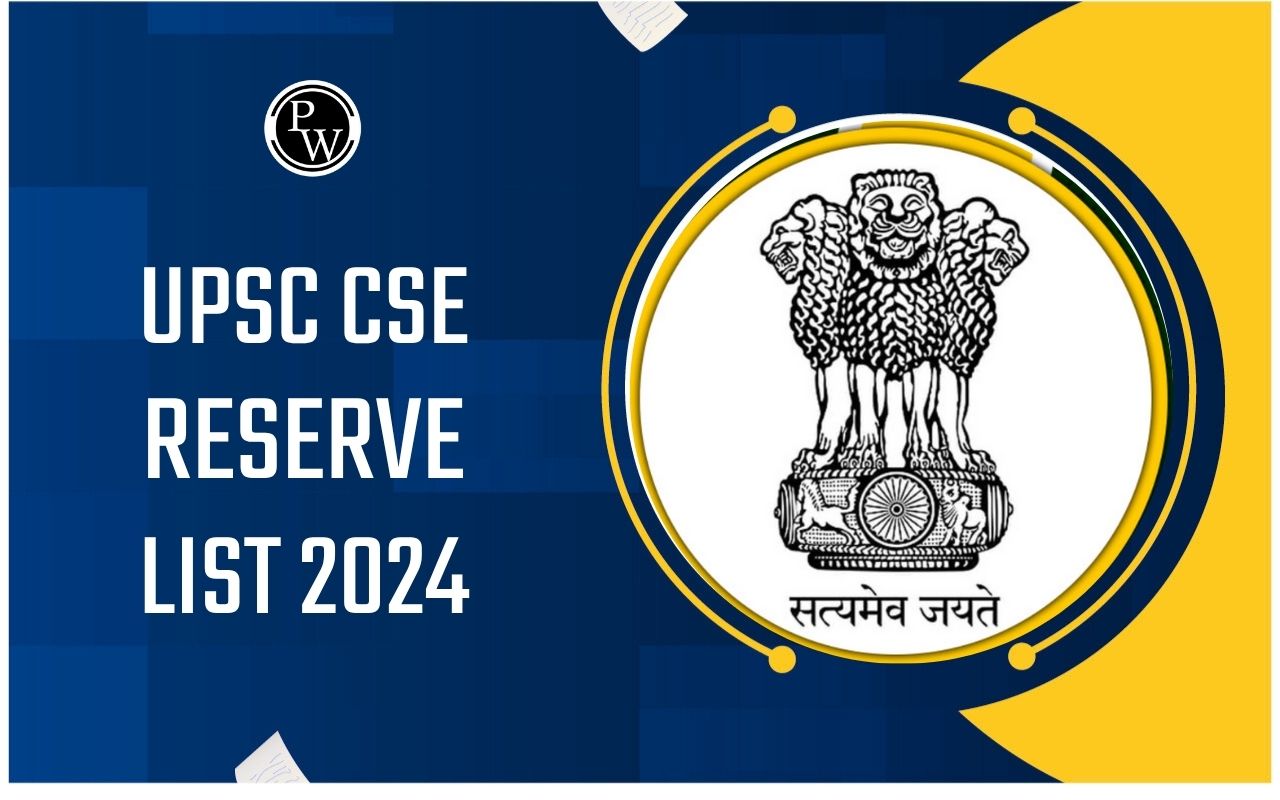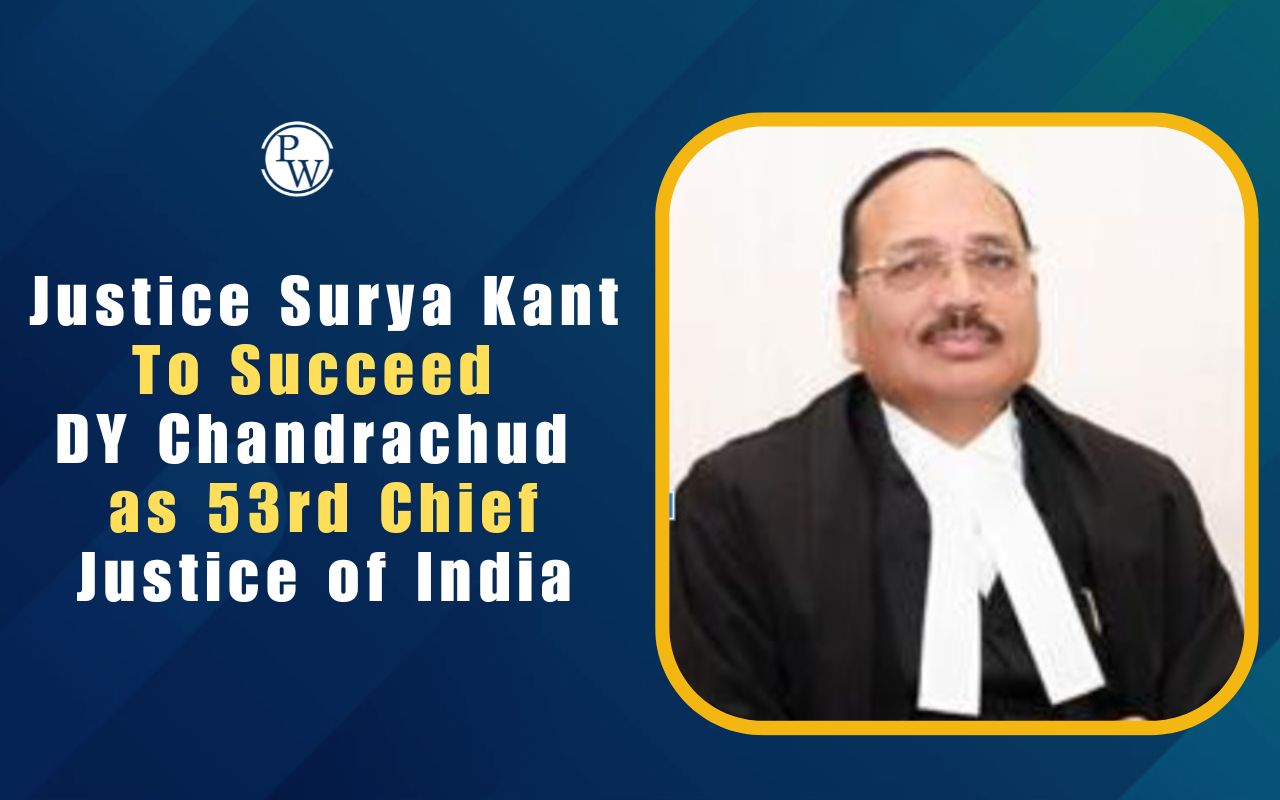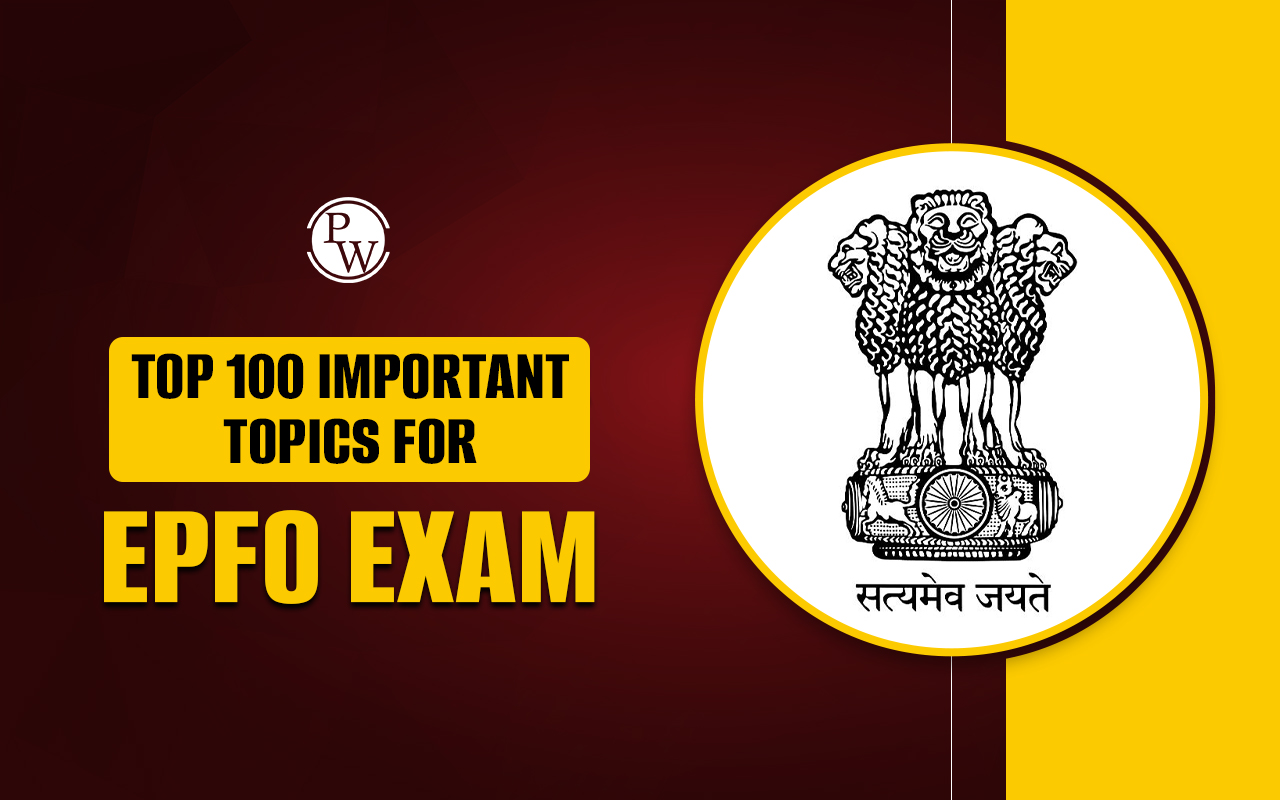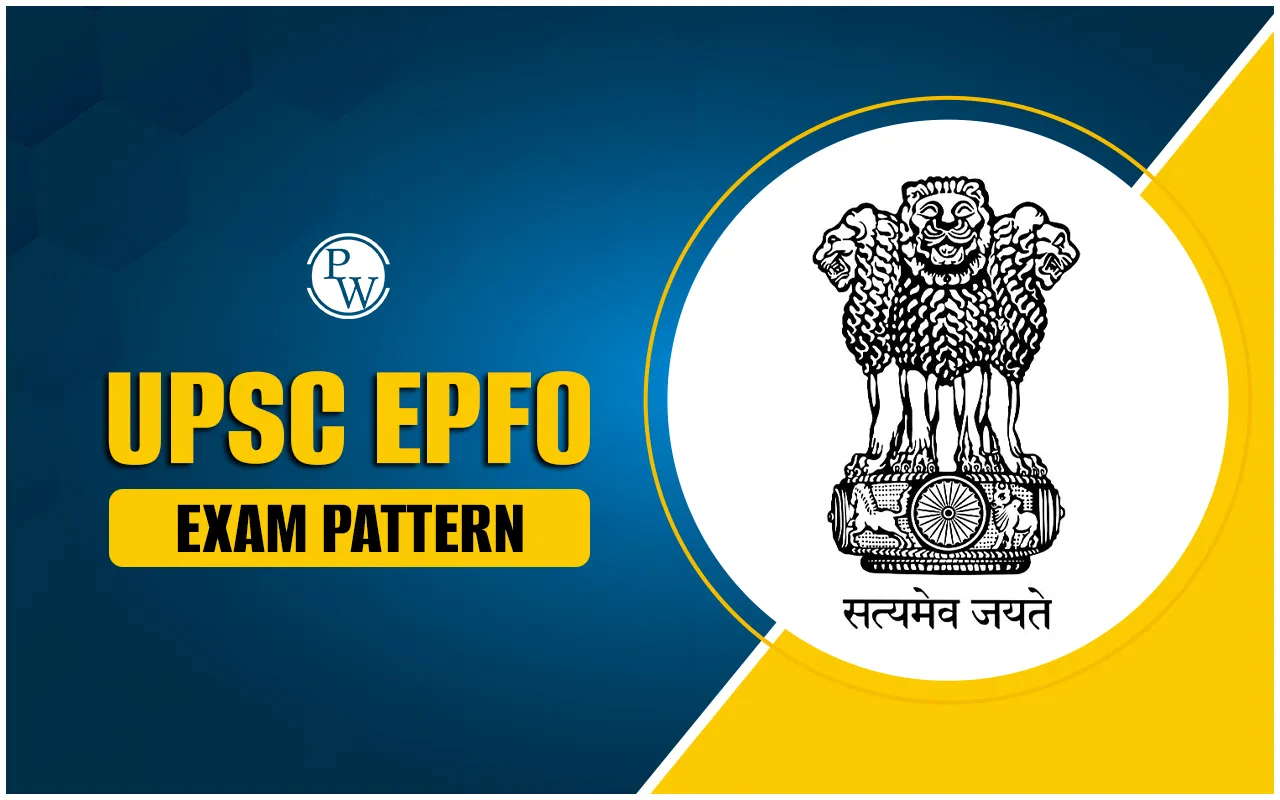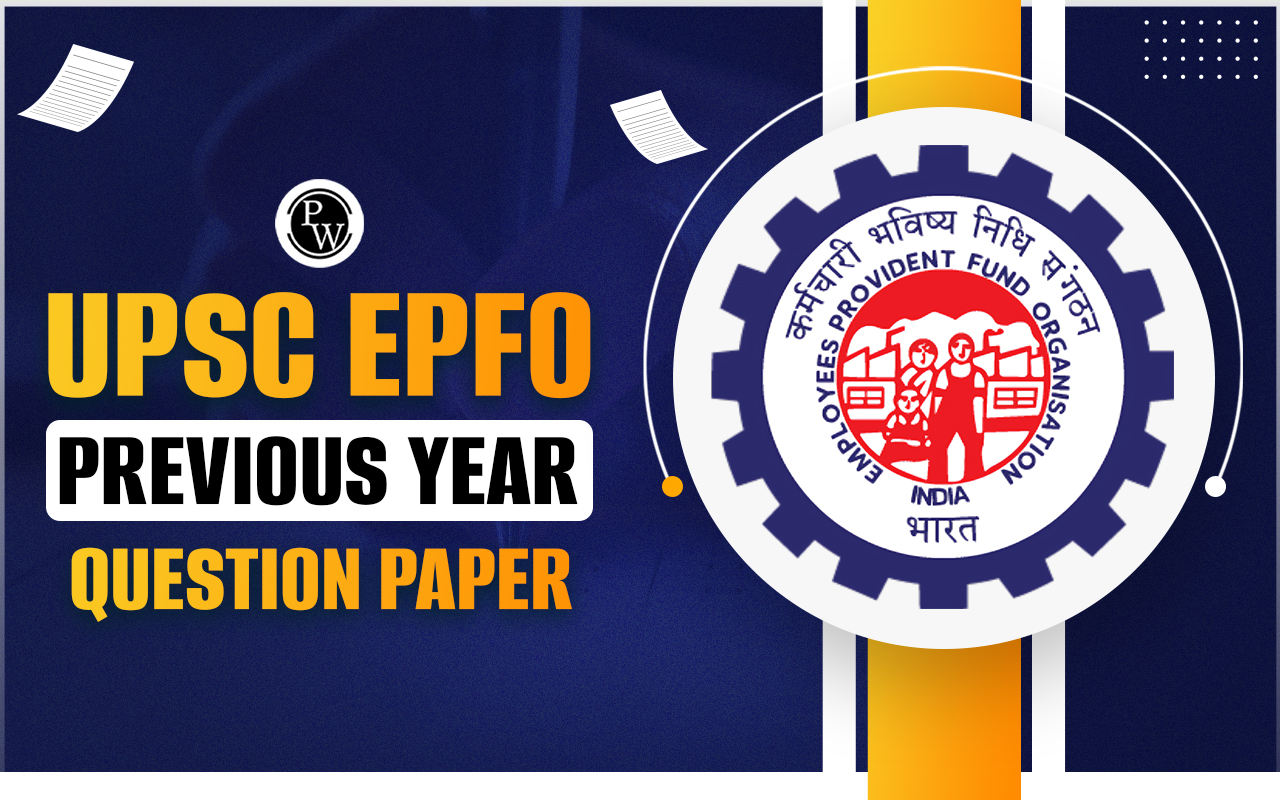
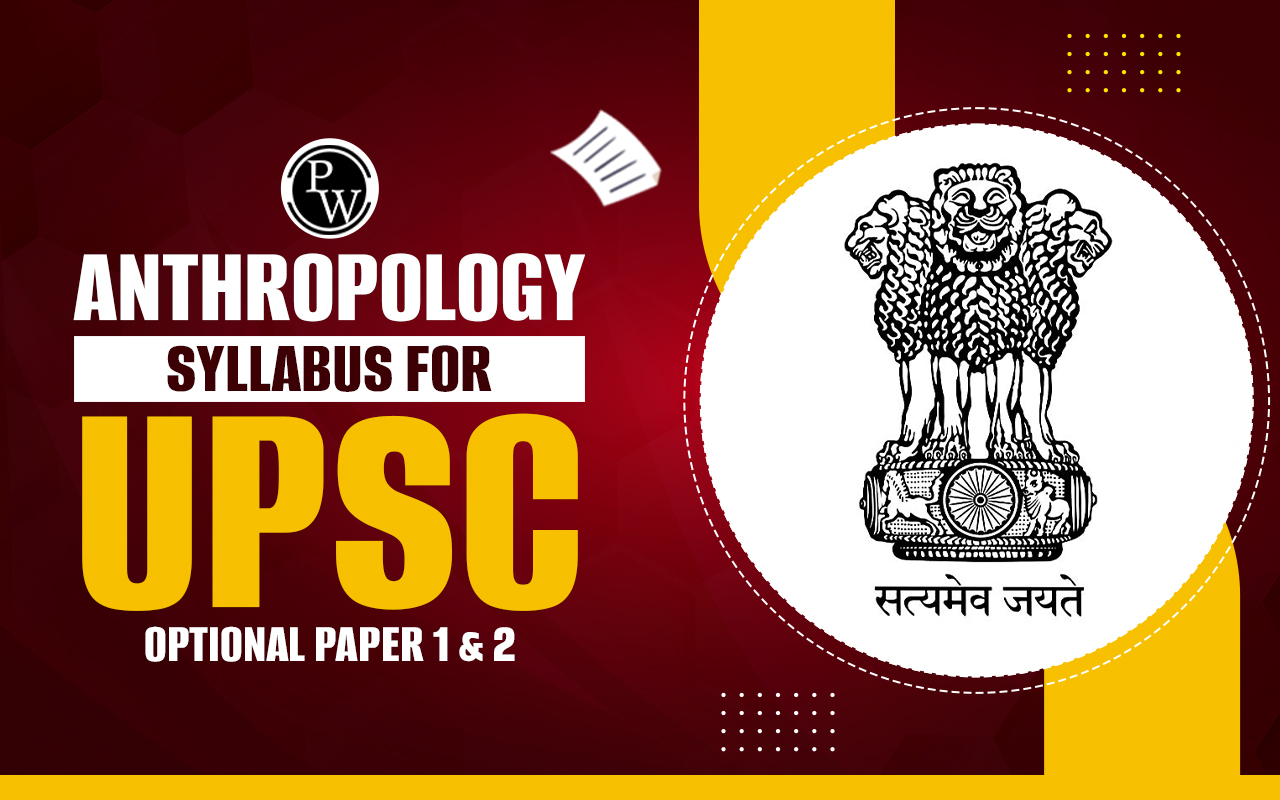
Anthropology Optional Syllabus 2025: It was the year 2017 when three toppers made it to the top 10 in the UPSC CSE exam with the same optional subject, ‘Anthropology Optional’. The AIR 1 Anudeep Durishetty particularly became well known for having Anthropology Optional when he credited his decision to change the UPSC optional subject as a major factor in his success.
Many reasons, including the success rate as evident again in the success of ‘ Shubham Kumar (AIR 1), make the Anthropology Optional an attractive option among aspirants targeting precious 500 marks in UPSC mains. Read on to find out your reason for picking this optional subject for the upcoming UPSC CSE exam.Anthropology Optional Syllabus 2025
The Anthropology Syllabus covers a wide range of analytical topics. According to some toppers, the Anthropology syllabus is relatively easy to cover in a limited time. Keep in mind that conceptual clarity should be the focus area while completing the Anthropology syllabus. The syllabus of the optional papers 1 and 2 have been provided here.Anthropology Syllabus 2025 for Paper 1
Paper 1 of Anthropology Syllabus deals with topics like meaning, scope, and development of Anthropology as a discipline. The detailed syllabus is provided in the below table:| Anthropology Syllabus - Paper 1 | |
| Topic | Subtopic |
|
1.1 Meaning, Scope, and Development of Anthropology 1.2 Relationships with other disciplines |
Relationships with other disciplines: Social Sciences, behavioural Sciences, Life Sciences, Medical Sciences, Earth Sciences, and Humanities. |
| 1.3 Main branches of Anthropology, their scope and relevance |
(a) Social-cultural Anthropology. (b) Biological Anthropology. (c) Archaeological Anthropology. (d) Linguistic Anthropology. |
| 1.4 Human Evolution and Emergence of Man |
(a) Biological and Cultural factors in human evolution. (b) Theories of Organic Evolution (c) Synthetic theory of evolution; Brief outline of terms and concepts of evolutionary biology |
| 1.5 Characteristics of Primates |
|
| 1.6 Phylogenetic status, characteristics, and geographical distribution of the following: |
(a) Plio-preleistocene hominids in South and East African—Australopithecines. (b) Homo erectus: Africa (Paranthropus), Europe (Homo erectus (heidelbergensis), Asia (Homo erectus javanicus, Homo erectus pekinensis. (c) Neanderthal man - La-chapelle-aux-saints (Classical type), Mt. Carmel (Progressive type). (d) Rhodesian man. (e) Homo sapiens—Cromagnon, Grimaldi and Chancelede. |
| 1.7 The Biological Basis of Life | The Cell, DNA structure and replication, Protein Synthesis, Gene, Mutation, Chromosomes, and Cell Division. |
| 1.8 Principles of Prehistoric Archaeology and Cultural Evolution |
(a) Principles of Prehistoric Archaeology Chronology: Relative and Absolute Dating methods. (b) Cultural Evolution—Broad Outlines of Prehistoric Cultures: (i) Paleolithic (ii) Mesolithic (iii) Neolithic (iv) Chalcolithic (v) Copper-Bronze age (vi) Iron Age |
| 2. Culture, Society, Family, etc. |
2.1 The Nature of Culture: The Concept and Characteristics of Culture and Civilization; Ethnocentrism vis-a-vis Cultural Relativism. 2.2 The Nature of Society : Concept of Society; Society and Culture; Social Institution; Social groups; and Social stratification. 2.3 Marriage: Definition and universality; Laws of marriage, Type of marriage, Functions of marriage; Marriage regulations, Marriage payments. 2.4 Family: Definition and universality; Family, household, and domestic groups; functions of family; Types of family, Impact of urbanization, industrialization, and feminist movements on family. 2.5 Kinship: Consanguinity and Affinity; Principles and types of descent, Forms of descent groups, Kinship terminology, Descent, Filiation and Complimentarity. |
| 3. Economic Organization |
|
| 4. Political Organization and Social Control |
|
| 5. Religion |
|
| Anthropological theories |
(a) Classical evolutionism (Tylor, Morgan, and Frazer) (b) Historical particularism (Boas) Diffusionism (British, German and American) (c) Functionalism (Malinowski); Structural—Functionlism (Radcliffe-Brown) (d) Structuralism (L’evi-Strauss and E. Leach) (e) Culture and personality (Benedict, Mead, Linton, Kardiner, and Cora-du Bois) (f) Neo—evolutionism (Childe, White, Steward, Sahlins, and Service) (g) Cultural materialism (Harris) (h) Symbolic and interpretive theories (Turner, Schneider, and Geertz) (i) Cognitive theories (Tyler, Conklin) (j) Post-modernism in anthropology. |
| 7. Culture, Language and Communication | Nature, origin, and characteristics of language; verbal and non-verbal communication; social context of language use. |
| 8. Research Methods in Anthropology | (a) Fieldwork tradition in anthropology (b) Distinction between technique, method, and methodology (c) Tools of data collection: observation, interview, schedules, questionnaire, case study, genealogy, life history, oral history, secondary sources of information, and participatory methods. (d) Analysis, interpretation, and presentation of data. |
| 9. Human Genetics and related topics |
9.1 Human Genetics: Methods and Application, Methods for the study of genetic principles in the man-family study, biochemical methods, immunological methods, D.N.A. technology, and recombinant technologies. 9.2 Mendelian genetics in man-family study, single factor, multifactor, lethal, sub-lethal, and polygenic inheritance in man. 9.3 Concept of genetic polymorphism and selection , Mendelian population, Hardy-Weinberg law, Consanguineous and non-consanguineous mating, genetic load, genetic effect of consanguineous and cousin marriages. 9.4 Chromosomes and chromosomal aberrations in man methodology. (a) Numerical and structural aberrations (disorders). (b) Sex chromosomal aberration, intersex, and other syndromic disorders. (c) Autosomal aberrations (d) Genetic imprints in human disease, human DNA profiling, genome study, etc. 9.5 Race and racism , biological basis of morphological variation of non-metric and characters. 9.6 Age, sex, and population variation as a genetic marker 9.7 Concepts and methods of Ecological Anthropology: Bio-cultural Adaptations, Man’s physiological responses to environmental stresses. 9.8 Epidemiological Anthropology: Health and disease. |
| 10. Concept of Human Growth and Development |
|
| 11. Fertility and Demographic theories |
11.1 Fertility patterns and differentials. Relevance of menarche, menopause, and other bioevents to fertility. 11.2 Demographic theories -biological, social, and cultural. 11.3 Biological and socio-ecological factors influencing fecundity, fertility, natality, and mortality. |
| 12. Applications of Anthropology |
|
Anthropology Syllabus 2025 for Paper 2
The Anthropology syllabus PDF for paper 2 is available on the official website of UPSC. The Anthropology Syllabus paper 2 focuses on the evolution of Indian culture and related aspects. The paper 2 syllabus is as follows for anthropology:| Anthropology Syllabus - Paper 2 | |
| Topic | Subtopic |
| 1. Indian Culture and Civilization | 1.1 Evolution of the Indian Culture and Civilization—
1.2 Palaeo—Anthropological evidence from India with special reference to Siwaliks and Narmada basin. 1.3. Ethno-archaeology in India: The concept of ethnoarchaeology; Survivals and Parallels among the hunting, foraging, fishing, pastoral and peasant communities. |
| 2. Demographic profile of India | Ethnic and linguistic elements in the Indian population and their distribution. Indian population—factors influencing its structure and growth. |
| 3. Traditional Indian social system |
3.1 The structure and nature of the traditional Indian social system 3.2 Caste System in India 3.3 Sacred Complex and Nature 3.4. Impact of Buddhism, Jainism, Islam, and Christianity on Indian society. |
| 4. Emergence, growth, and development in India |
|
| 5. Indian Village and Society |
5.1 Indian Village —Significance of village study in India; Traditional and changing patterns of settlement and inter-caste relations; Agrarian relations in Indian villages, Impact of globalization on Indian villages. 5.2 Linguistic and religious minorities and their social, political, and economic status. 5.3 Indigenous and Exogenous Processes of socio-cultural Change in Indian Society. |
| 6. Indian Tribe |
6.1 Tribal situation in India —Bio-genetic variability, linguistic and socio-economic characteristics. 6.2 Problems of the tribal Communities. 6.3 Developmental projects and their impact on tribal displacement and problems of rehabilitation. |
| 7. Castes, Social change, Ethnicity |
7.1 Problems of exploitation and deprivation of Scheduled Castes, Scheduled Tribes and Other Backward Classes. Constitutional safeguards for Scheduled Tribes and Scheduled Castes. 7.2 Social change and contemporary tribal societies 7.3 The concept of ethnicity : Ethnic conflicts and political developments, Unrest among tribal communities; Regionalism and demand for autonomy; Pseudo-tribalism. Social change among the tribes during colonial and post-independent India. |
| 8. Impact of Religion on Tribal Societies |
8.1 Impact of Hinduism, Buddhism, Christianity, Islam, and other religions on tribal societies. 8.2 Tribe and nation-state —a comparative study of tribal communities in India and other countries. |
| 9. Administration of tribal areas, etc. |
9.1 History of administration of tribal areas, tribal policies, plans, programs of tribal development, and their implementation. The concept of Primitive Tribal Groups. Role of N.G.O.s in tribal development. 9.2 Role of anthropology in tribal and rural development. 9.3 Contributions of anthropology to the understanding of regionalism, communalism, and ethnic and political movements. |
UPSC Mains Anthropology Optional
Anthropology as a discipline studies human societies and cultures. To simplify Anthropology is the ‘science of humanity ’ where students learn about the origin, evolution, and development of humanity. Anthropology optional paper is included in the list of 48 approved optional subjects for UPSC Mains. Like other optional subjects, there will be two papers in ‘Anthropology Optional’ worth 250 marks each. Candidates will have 3 hours to complete each paper by writing the most relevant and accurate answers. The highest score in the Anthropology optional subject in 2022 was 325, which implies that this subject has lots of potential.
UPSC Anthropology Optional Syllabus 2025 PDF
UPSC Mains Anthropology Optional Syllabus PDF provides the complete and updated syllabus, as prescribed by the Union Public Service Commission. It is divided into two papers: Paper I, General Anthropology, and Paper II Indian Anthropology, each carrying 250 marks. Aspirants can download and refer to this syllabus for structured preparation and effective strategy planning:
UPSC Mains Anthropology Optional Syllabus PDF - Click Here to Download
Anthropology Optional Pros and Cons
The Anthropology Optional pros and cons must be carefully evaluated by aspirants before picking this subject. This is because, like every other subject, anthropology also has some advantages and disadvantages, which are discussed below:Advantages of Choosing Anthropology Optional
The favorable points that make Anthropology an appealing Optional are as follows:- Counted among scoring subjects with a decent success rate in previous years.
- Usually, direct questions are asked as Anthropology has a scientific approach, making it easier to present content well.
- The syllabus can be completed easily with sufficient resources available.
- Make it easier to understand some of the concepts, such as society, and tribes for GS 1 and GS 2 papers.
Disadvantages of Choosing Anthropology Optional
The cons that must be considered before choosing Anthropology Optional are as follows:- Limited utility in GS papers, unlike other subjects such as geography, political science, and sociology.
- Require good coaching to understand certain complex concepts and learn answer writing.
- Technical Syllabus: Some topics are technical in nature, which makes it challenging for non-science graduates to understand the concepts.
- Candidates can’t rote-learn topics, and conceptual clarity is a must to score well.
Books To Cover Anthropology Syllabus
Once you made up your mind, make a booklist that ensures comprehensive coverage of the complete Anthropology syllabus. Choosing Anthropology optional books might be an overwhelming task for new aspirants. This is why I try to stick with experts' and toppers' recommended booklists. Here are Anthropology Optional Books recommended by AIR 1 IAS Anudeep Durishetty:| Anthropology Optional Books | |
| Paper | Books |
| Paper I |
|
| Paper 2 |
|
Anthropology Optional Preparation Tips
Anthropology is one of the trickiest optional subjects and therefore requires a perfect strategy. To begin with, candidates must first develop a basic understanding of the Anthropology Optional syllabus and go through Anthropology Optional PYQs. Later, making short notes and joining a good test series would help. Here are some tips to prepare for the anthropology optional subject for UPSC mains:- Syllabus First: Have an overview of the anthropology optional syllabus PDF and identify important topics based on previous year's papers.
- Take Guidance: This subject requires conceptual understanding and good answer-writing skill,s for which it is advisable to join the anthropology optional coaching .
- Strong Foundation: Ensure to have a good basic foundation in this subject and then move to advanced preparation.
- Syllabus Prioritization: Look for more important topics that are asking for maximum marks, and prepare it thoroughly.
- Revise Well: Make short anthropology optional notes while completing the syllabus or revise from resources provided by mentors. Sufficient revision will help in having a solid grasp of the subject.
- Practice: Solving PYQs and joining a good test series is highly recommended. Do not miss any answer writing tests, and learn to draw neat diagrams. For reference, get ideas from the Anthropology optional topper copy and the expert’s feedback.
Anthropology Optional Syllabus FAQs
Is Anthropology a good optional subject for UPSC CSE?
Is anthropology a high-scoring optional subject?
Can I complete the Anthropology syllabus in 3 months?
Why do toppers choose the anthropology option?
Is anthropology optional the toughest subject for UPSC?




